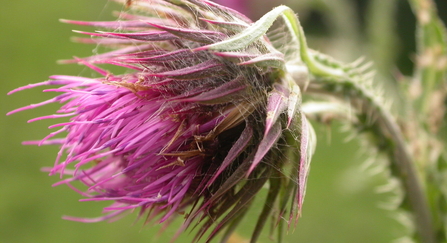Thistles are a group of flowering plants in the Asteraceae family, sharing it with daisies and sunflowers. They are known for their prickly foliage and bright purple flowers, commonly treated as weeds. But thistles aren't only a prickly menace, they can actually make our green spaces richer and more biodiverse!
To talk about the benefits of thistles I will be using an example mostly found in England, mainland Britain, as well as Europe and north Africa, known commonly as the nodding thistle. This thistle prefers to grow in chalky and limestone soils and gets its name from the way the flowers hang downwards, appearing to nod. It is also known as the musk thistle, due to the musky scent of its flowers.


